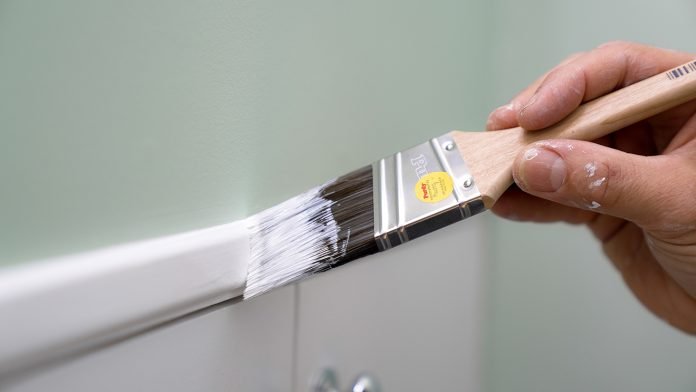Here, Andrew Cummins, Senior Product Manager at Purdy, explains how the different elements of Purdy’s handmade brushes combine to make the perfect brush for any task. Purdy has almost 100 hundred years’ experience producing high-quality brushes and in that time its ethos has never changed. Since the creation of that first brush by S. Desmond Purdy in 1925 all of its brushes have been handmade in Portland, Oregon and proudly marked with the name of the craftsman who created it.
Purdy brushes come in a variety of different sizes and shapes, each suited for a different task and designed for maximum control and efficiency. When working on furniture spindles or glazing bars then a small brush is ideal, whereas if you need to get into a tight corner then an angular brush, such as the XL Elite – Dale, is best. Finally, if you’re planning on painting a large area then a wide, flat style brush such as a 3” XL Elite – Monarch brush is the most efficient. However, it’s not just about selecting the right shape and size – each Purdy brush is created using a specific combination of components, selected to actively aid the final finish.
Brimming with options
The bristles of each brush are made up of thousands of individual filaments. The material and shape of the filaments are what gives the brush its specialist characteristics. All the filaments used in Purdy brushes are SRT (Solid Round Tapered), with a blend of synthetic nylon and polyester filaments used to simulate natural bristles. The bristles are fixed into place using bolstered epoxy which eliminates the chance of finish-ruining loose filaments.
Depending on the type of brush, the filaments will differ in thickness. Thicker filaments, like those used in the Purdy XL Elite – Monarch, are better for thicker paints, such as emulsions. Whereas the finer filaments of the Purdy Syntox are for applying varnishes and wood stains, leaving a beautiful, mirror like finish.
Splitting hairs
All Purdy brush filaments are tipped and flagged; this process involves splitting the end of each filament into three to five thinner ends. Flagging increases the pick-up of paint and helps create a smooth even release when laying-off, reducing the likelihood of streaks or clumps. With cheaper alternatives performance will soon suffer, as the filaments are only split at the very ends, whereas Purdy’s unique self-flagging filaments will continue to split as the brush ages and wears, ensuring high-quality application throughout the brush’s life.
The ferrule
The ferrule is the metal collar that surrounds the bristles. The shape of the ferrule dictates the shape of the brush: a square ferrule creates a crisp edge ideal for straight lines and cutting-in, while a round ferrule allows the bristles to spread more easily when pressure is applied, covering a greater surface area more efficiently. The ferrule also includes a chamber, which helps to evenly release paint. With a cheap paintbrush, the ferrule is prone to impact or rust damage which can change the shape of the bristles. That’s why Purdy only uses strong and corrosion resistant stainless steel or copper for its ferrules. The ferrule is then attached to the handle with corrosion resistant, nickel-plated reinforced nails.
Handle with care
Every Purdy brush handle is made using Alderwood, harvested in the pacific north-west of the USA. Alder is an ideal material because it’s an abundant, renewable, light weight but durable hardwood that absorbs moisture. This means that you can work with your Purdy brush all day without the handle getting slippery. The shape of the handle can also aid application. Purdy offers four different handle variations, each ergonomically designed to suit specific tasks or preferences. The Rattail, for example, is long and skinny and suited to being held like a pencil, whereas the Fluted handle has rounded corners to allow it to sit better in the hand. There is also the Beavertail which is thick and rounded to allow for a good grip, whilst the Short handle of the Purdy XL – Cub is ideal for manoeuvring your hand in to tight spaces.
Keep the Keeper
To ensure your brushes remain in tip top condition use Purdy’s Brush and Roller Cleaner, which has been designed to extend the life of your favourite tools. Purdy also recommends keeping the waxed packaging provided (the keeper) and that, after cleaning, you replace the brush back within the packaging. This helps to return the bristles to their original shape and protects the tips of the filaments from impact damage between uses.
If you would like to find out more about the difference Purdy products could make to your work, please visit: www.purdy.co.uk








